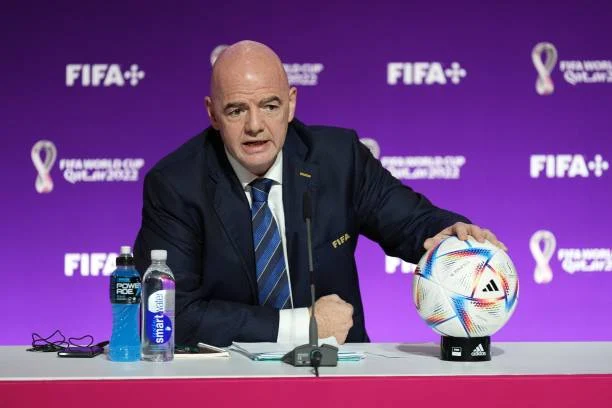From 1930 to 2030: The Evolution of the FIFA World Cup
From 1930 to 2030: The Evolution of the FIFA World Cup

From 1930 to 2030: The Evolution of the FIFA World Cup(Image-Getty)
The inaugural FIFA World Cup, held in Uruguay in 1930, may seem like a distant memory, but it marked the beginning of a historic sporting event. At the time, the tournament featured only 13 teams, with last-minute efforts to entice European teams to attend, albeit with limited success. Notably, Egypt missed their ship connection to the tournament. The 1930 World Cup generated modest attention, primarily in South America.
Fast forward to the present day, and FIFA has recently made an exciting announcement. In commemoration of the World Cup's centenary, Uruguay, Argentina, and Paraguay will serve as hosts for the 2030 edition. This unique event will be jointly hosted by Morocco, Spain, and Portugal.
In stark contrast to the relatively obscure 1930 tournament, the 2030 World Cup is poised to capture the attention of billions worldwide, thanks to technological advancements that were unimaginable a century ago. Instead of a mere 13 teams, nearly a quarter of the world's countries will participate, following the tournament's expansion to include 48 teams starting from the 2026 edition.
Moreover, while the 1930 players were predominantly amateurs, the 2030 World Cup will showcase some of the highest-paid and most recognizable athletes globally.
For today's fans, it's challenging to grasp the scope of the 1930 World Cup. Despite the existence of international football for nearly six decades, it had limited global reach, and cross-continent competitions were infrequent outside of the Olympic Games.
Unlike today's structured qualification process, the 1930 tournament invited the entire world to participate. However, two months before the event, no European team had accepted the invitation. England, which was not part of FIFA at the time, viewed such a competition as beneath them and didn't participate until 1950.
Eventually, four European teams—Belgium, France, Yugoslavia, and Romania—were persuaded to embark on the lengthy sea voyage. Siam (now Thailand) initially entered but withdrew and hasn't qualified since. Japan had to wait until 1998 to make their World Cup debut.
Egypt was supposed to represent Africa but missed their connecting ship, leaving an unwieldy 13 teams in the competition.
Despite the initial challenges, the group stage of the 1930 tournament was surprisingly competitive. However, both semi-finals ended in 6-1 routs, with Argentina defeating the United States and Uruguay crushing Yugoslavia. The U.S., one of the hosts for the 2026 tournament (alongside Mexico and Canada), played much of their semi-final with only nine players, as substitutions were not yet allowed. A particularly violent incident led to the U.S. coach, Jack Coll, running onto the field to confront the referee, tripping, and breaking a bottle of chloroform. He was knocked out by the fumes and had to be stretchered off, alongside his injured player.
In the final, Uruguay, who had previously won the two Olympic football titles (which were considered unofficial world championships at the time), defeated their Argentine rivals 4-2 in Estadio Centenario, one of the venues for the 2030 tournament.
Uruguay claimed another World Cup victory in 1950, while Argentina established itself as a footballing powerhouse, winning their first title in 1978 and adding two more in 1986 and 2022.
As for Paraguay, their inclusion in the 2030 tournament, along with automatic qualification, remains unexplained by FIFA, despite their limited historical success in World Cup competition. They participated in the first tournament but have reached the quarter-finals only once.




